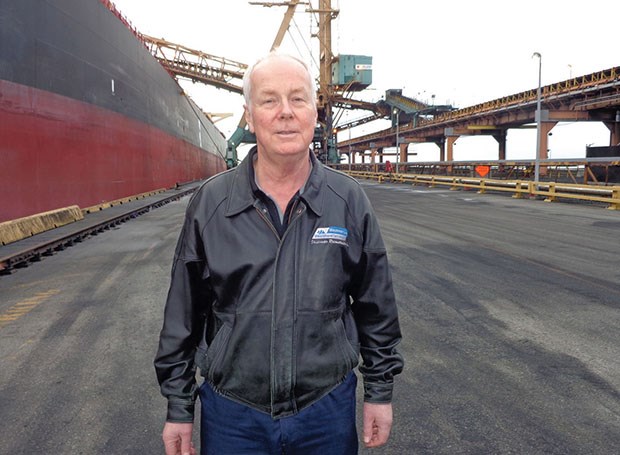North America's busiest coal export facility at Roberts Bank is about to undergo a major upgrade.
Originally opened on a much smaller footprint in 1970, Westshore Terminals will spend about $230 million over the next five years for a large-scale equipment upgrade as well as replacement of older buildings with a centralized office and equipment complex.
Westshore has already begun replacing equipment, including spending over $14 million on new dust suppression and water recycling measures, over the past couple of years.
"We've been in business for 44 years and some of our equipment has become quite old, in need of major refurbishment. It's not about expansion but staying efficient and in business," said vice-president and general manager Denis Horgan.
The upgrades include new stacker-reclaimer machines that move coal into stockpiles as well as load it onto ships. The electric- powered machines will have a longer reach, reducing the need for bulldozers to move coal around, and will have built-in dust suppression equipment.
The improvements also include a wider and quieter conveyer belt system, the replacement of the 30-year-old shiploader on Berth 1 with a system that will also have dust suppression capabilities as well as energy efficient lighting throughout the site.
In late 2012, a large bulk carrier docking at Westshore collided and heavily damaged the Berth 2 loader, knocking it out of commission for a couple of months, resulting in millions in lost revenue. It was replaced with a better system.
The next round of upgrades at the site will result in extra space available for coal storage of about 135,000 metric tonnes. The new stacker reclaimers and conveyer system, meanwhile, will operate more efficiently, thereby improving throughput capacity.
The result will mean the terminal will be able to process an additional three million tonnes annually, increasing its annual capacity to 36 million tonnes. It will result in one extra train every two days, over its existing six trains per day, and an additional two ships per month, on top of an approximate 25 ships per month.
Horgan said while the improvements will make the operation more efficient, Westshore isn't looking at expanding, even though it's operating at capacity and has had to turn away business.
He said trying to make the terminal even bigger on a manmade island would be cost-prohibitive as well as face potential environmental roadblocks. A recent civic staff report to Delta council notes that approximately 270,000 rail cars currently pass through to Westshore Terminals every year and that the community is now asking questions and wants to understand the impacts, if any, the movement of coal may be having on their health and the environment.
Because industrial operations are subject to stringent regulations, which require monitoring of emissions, the report notes, it's not unreasonable to hold the transportation industry to the same standards and expect the impacts from the transportation of coal on local communities and the environment are monitored and understood.
Council agreed to request funding from Westshore and Metro Vancouver for Delta to undertake an independent one-year study of dust emissions from coal cars, including continuous dust monitoring at locations along the railway corridor. Westshore has already committed to contribute. Horgan said Westshore, meantime, has additional dust emission measures planned this year, including four more high tower sprays along the southern edge of the site, spraying empty railcars with dust binding coatings as well as a system to apply dust suppression coatings on coal being loaded onto ships.



